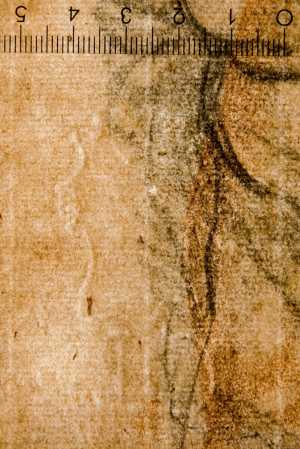Specifications
| Title | Study for a St Sebastian |
|---|---|
| Material and technique | Black chalk, heightened with white, on brown prepared paper |
| Object type |
Drawing
> Two-dimensional object
> Art object
|
| Location | This object is in storage |
| Dimensions |
Height 426 mm Width 261 mm |
|---|---|
| Artists |
Draughtsman:
Jacopo da Empoli (Jacopo Chimenti)
|
| Accession number | I 420 recto (PK) |
| Credits | Loan Stichting Museum Boijmans Van Beuningen (former Koenigs collection), 1940 |
| Department | Drawings & Prints |
| Acquisition date | 1940 |
| Creation date | in circa 1615-1620 |
| Watermark | 'head of a "moor"' (facing right) with initials CL (58 x 33 mm, upright, centre right, on P6 of 7P, vH), comparible with Briquet 15650 (smaller with the same initials, Pisa 1588-89) |
| Inscriptions | ‘2’ (lower right, black chalk?), ‘x’ (upper left, pencil), '9' (verso, upper left, pencil), '3139' (verso, upper right, pencil), ‘Empoli’ (verso, lower right, pen and brown ink), 'c 10' (verso, lower right, red chalk) |
| Collector | Collector / Franz Koenigs |
| Mark | J.D. Böhm (L.1442), Frederic Archduke of Austria (L.960) deest, F.W. Koenigs (L.1023a) |
| Provenance | Joseph D. Böhm (1794-1865, L.271, 272, 1442), Vienna; his sale, Vienna (Posonyi) 04.12.1865, lot 1260 (Van Dyck, Fl [...]); - ; Archduke Frederic of Austria, Vienna (1856-1936, L.960), deposited in the Albertina, Vienna, in 1918/1923; Art dealer Julius W. Böhler (1883-1966), Lucerne; Franz W. Koenigs (1881-1941, L.1023a), Haarlem, acquired in 1929 (Jacopo Chimenti da Empoli); D.G. van Beuningen (1877-1955), Rotterdam, acquired with the Koenigs Collection in 1940 and donated to Stichting Museum Boijmans Van Beuningen |
| Exhibitions | Rotterdam 2009 (coll 2 kw 4) |
| Internal exhibitions |
De Collectie Twee - wissel IV, Prenten & Tekeningen (2009) |
| Research |
Show research Italian Drawings 1400-1600 |
| Material | |
| Object | |
| Technique |
Prepare
> Prepared
> Shaping techniques
> General technique
> Technique
> Material and technique
Prepare
> Prepared
> Shaping techniques
> General technique
> Technique
> Material and technique
Highlight
> Painting technique
> Technique
> Material and technique
|
| Geographical origin | Italy > Southern Europe > Europe |
| Place of manufacture | Florence > Tuscany > Italy > Southern Europe > Europe |
Do you have corrections or additional information about this work? Please, send us a message

























